|
You are reading the older HTML site
Positive Feedback
ISSUE
23
The Return of Dr. Sardonicus ...My Manifesto ...Convergence ...and the BAT VK-600SE!
A very wise man once said, "Full disclosure means no conflict of interest." When reading a critical review of anything from movies to food, it's useful to know something of the person writing it. Disclosure. This knowledge provides a context to the review process. It helps to identify the biases and eccentricities of the reviewer and provides the reader with information of potential use in understanding and contextualizing what the writer has to say. I have not actively participated in the Positive Feedback Online editorial community for a long time. The only comment I will make about that is, if you live long and fully enough, you too will lose your joy, if only for a time. That pithy bit of homespun philosophy aside I am returning to the pages of PFO in force (I will be writing a lot). Oh, and to my dear friend and editor, David Robinson, who has been more patient with my absence than anyone else would have ...thank you, mi hermano. So, this means I am kinda NOS (new old stock); new to a great many of the current readers, but I have been around for a bit. At any rate ...here is the context I choose to serve up for what is to come. Context, disclaimer, caveat, or mea culpa ...you pick. The Sardonic Manifesto I think the most important thing is ...I know what music sounds like ...from the inside, from the outside, from the sidelines. Upside down, and inverted. It is the amniotic fluid of my existence and there are very few "musical experiences" I have not had. Music has ruled my life since consciousness. I became a musician at the customary age, a professional musician in junior high (yes, I got paid, and regularly too). At sixteen they were sneaking me in the back of smoky bars to play. From musical theater to all-state and all-northwest band and choir, I performed in musical ensembles ranging from embarrassing madrigal groups (great way to get chicks) to heavy rock bands (I destroyed endless drum heads, and even two Speed King peddles). I played professionally into my thirties. I wasn't good enough for the show, but I was good enough not to have to work regular jobs through college, drive a nice car, and have my own apartment. A relentless consumer of both live and recorded music, I saw Segovia, Battle, Donovan, Pavarotti, Chuck Berry, George Winston, Harry James, Buffalo Springfield, Santana, Steppenwolf, Yo Yo Ma, Ravi Shankar …and a gergillion other luminaries in venues ranging from people's basements, through smoky bars …to crowded amphitheaters. I once wandered in to a bar in Natchitoches, Louisiana, drawn by the snake charmer strains of sweaty delta blues, only to be attacked by drunken Cajuns and forced to dance until I was anoxic by some of the sultriest women I have ever seen. Roy Rodgers even picked up his old guitar and sang me a song at lunch (well, there were four girls there too, but I am quite confident the song was for me). Having been on both sides of the glass in recording studios, my absolute reference for recorded music is in vivo direct-feed, minimal recording chain, surround DSD recordings of live performances, (while being able to move freely between the recording control room and the actual concert in progress at any point in the venue I chose, from the stage apron to the balcony). How is that for the ultimate A-B experience? Audio has been a part of my life since I used the first dollars I ever made from my own sweat to purchase a radio. I think it is now officially a toss-up, which has cost me more …audio, or being married. Well, at least with audio I have enjoyed it most of the time. I am still touched and amazed the average person can have libraries of printed books, recordings of music and film in their own home. Don't you occasionally feel a sense of awe when you pop a Kurosawa film in the DVD player? Talk about a small world. I can make a cup of fine, freshly ground Costa Rican coffee, fire up my audio system and listen to Stravinsky directing, Rites of Spring …how cool is that? I grew up without indoor plumbing. As some famous bon vivant once opined, as long as you have the luxuries of life, what need for the essentials? Music has been berry, berry good to me. From the unadulterated joy of performing before an audience, to that wonderful tangy smell that old brass instruments give off when you open their worn cases (Wow, talk about state-dependent memories!), to the kinesthetic memory of the feel of guitar strings under my fingers, and the wind from a B-3-driven twin Leslie brushing my hair …music was, is, and always will be life's defining joy. The cosmic string theorists say the ultimate nature of the universe is vibration, music …but we already knew that, didn't we? And there have been so many unexpected benefits arising from this life-long passion of mine; places I have seen, experiences savored …all kinds of surprises and adventures …all because of the music. Among these benefits I am also blessed to be friends with some of the finest audio designers and persona in the world. You haven't really lived until you have watched Lloyd Walker try Hunan Eggplant for the first time, or listened to Jennifer Crock explain how transistors really work. And of course, there is David Robinson, first my editor, and now for many years now, my trusted friend ...the list goes on. This is the foundation, the context out of which I write. But, I also have a few confessions to make. I just won't make them all at one time. A little mystery is a good thing in any relationship. First and foremost, I am a confused audiophile. Frankly, I simply don't understand most of "it." I have listened to mega-buck systems and remained unmoved, nay ...even distressed with what I heard. I went through virtually an entire international audio exhibition and found two rooms I thought sounded like music. I listened to people waxing rhapsodic and never understood how you can be transported by an audio system that is not even competently performing its most basic functions. I have listened to learned dissections of the minutiae of audio reproduction when the most basic elements of a stereo soundstage were not in evidence. I have listened to every rationalization for why, at that specific moment, things are not working as they should. It's as though the true audiophile only exists in the unrealized future, when everything magically comes together sufficiently to produce actual music. So this is my primary disclaimer. I will speak to you straight and true, but I won't follow the forms and I don't give a crap about political stuff. I also refuse to play the phony techo-mage for credibility. If you want some scientized explanations look elsewhere. Honestly, I have no idea how most of this stuff actually works …and neither, I suspect, do most of you. As to technical specs, you can read the manufacturer's blurbs as well as I can. I will write about what I hear and what it is like to live with the piece(s) under review as honestly and as entertainingly as I can. After all folks, just in case you missed this meeting, this voodoo that we do as audio journalists is "infotainment" and it is every bit as subjective as a restaurant review and way often just as political. Dr. Sardonicus's System Of course, one of the most important contexts of an audio review is the system(s) used by the reviewer. So, here we go ...first ...what is rotating in and out of my current reference system. This is not totally complete, but I ran out of room. Sources Analog Source - Technics SP-10 direct drive TT in custom Jena Labs plinth, SME-10 tonearm, and a Cardas Heart MC phono cartridge. Digital Source - Sony SCD-1 SACD player (with modifications).
Phono Preamplifiers
Balanced Audio Technology VK-P10SE
a Balanced Audio Technology VK-51SE (tube)
Power Amplifiers Balanced Audio Technology VK-600SE (300 W/channel) and Balanced Audio Technology VK-500 (BAT-PAK) (500 W/channel) amplifiers. Loudspeakers Piega P-10 loudspeakers.
Cables Jena Labs interconnect and loudspeaker cables.
Secondary System(s) Digital Sources
Sony SCD-777ES
Sony C-333-ES SACD players. Electronics
Dussan V8i Hyper Class A integrated amplifier (250 W/channel)
Dussan V6i Hyper Class A integrated amplifier (150 W/channel)
Dussan DS99 integratedamplifier (100 W/channel) Loudspeakers
ACI Sapphire XL loudspeakers. Miscellaneous …I use a mix of various stuff, such as Michael Green's JustaRacks, ACS bass traps and flat panels, lots of Black Diamond Racing (Source Shelf, The Shelf, Those Things, Round Things, Cones, etc.), Grizzly Industrial machined granite slabs, Grizzly Industrial maple butcher blocks, and a host of other audiophile doodads. A Beginning is a Delicate Time The Series - The Prelude Over at least the next twelve months I have an ambitious series of interrelated reviews lined up. I suppose I could hole up and wait until all was finished before opening my mouth, but that is SO not in my nature. So, I thought ...why use outmoded writing approaches dictated by the print media in a medium that has none of those limitations? Why not write a review as it is actually done ...as a process; circular, not linear? You will have to tell me if this works. I only know that it makes sense to me. David assures me that through the magic of television he can make it all work. We shall see. It's All Silica After All - A Tale of Two Amplifiers There's Something Happening in Here... One of my engineer-type friends is convinced that, as a result of improvements in technology, there is a "convergence" occurring …a convergence that is blurring the distinctions historically separating tube from solid state amplification "sound." The hypothesis is that high-end tube amps are increasingly evidencing the neutrality, control and power characteristics attributed to transistor amps, while solid state designs are increasingly evidencing harmonic richness and absence of grain and glare associated with the best of tube designs. This is an interesting and potentially important hypothesis. However, at this point in time I am only going to be able to address one side of it, the assertion that the new generation of solid-state amplifiers is losing their signature "sandy-ness". I think there is something to this hypothesis because of what I am hearing with two very different solid-state amplifier designs currently in residence in my home. So I decided to break on through to the other side, and I am doing a preliminary piece in anticipation of full reviews on the BAT VK-600SE power amplifier, and a fascinating new offering from a Chinese manufacturer, the Dussan, Hyper-Class A V-8. Caveat: these "full" reviews may take any form I so choose. Just be aware there will be more said. So, here is the first installment on a mini-review in the context of this hypothesis. Ok, first, the usual suspects... This is NOT my first rodeo, and over the years I have listened to the various tricks designers and manufacturers use to get their products noticed, and the fashionable things that sweep through audiophilia. I am unmoved. For solid-state ...you shave a little off the top and the bottom and do some artful restrictions to keep everything happy; restrict power supply to "soft-clip" ...and trade dynamic compression for other sins so frequently attributed to solid-state. Keep it to a design of modest size, 100 watts or less. For tubes ...big push-pull, lots of tubes ...lots of heat. Then, you forgive. You forgive bass, forgive extension, and forgive control. Focus on speaker matching. And for both, you try every aftermarket voodoo fix you can lay your hands on and then ultimately find yourself only listening to a few recordings that actually sound good and construct elaborate rationales for why this is life as we know it.* *Yes, I know I have maliciously engaged in the worst sort of negative stereotyping of both topologies. Please accept this note as my pro forma mea culpa and absolutely sincere gratuitous apology. Screw that. Things work or they don't. Get defensive if you wish. If I hear one more explanation why it's OK that a reference system has no real response below 50Hz, or why "the all-important mid-range" is the only thing one need really be concerned with, I will throw a shoe. Spending ten minutes with a system and wanting to claw the ears off the side of my head because it is harsh, cold and without love equally distresses me. "Extension" and "transparency," my butt! And dynamic range? Yeah, like the emotional range of Keanu Reeves …from A to B. We pick between shouty and compressed. These are not choices we face, but dilemmas. The Price of Romance It isn't just what you hear that is at issue. What you don't hear has a profound impact on what you DO hear (e.g., the role low bass frequencies and their harmonics have in everything from harmonic texture to spatial localization). There is also something about dynamic range and headroom that is simply essential to the realistic reproduction of living music. Real music is shockingly dynamic. Even a single human voice can blow your doors off. The degree to which many systems severely compress dynamic range is disheartening. If your system does not have the ability to make you flinch, something is wrong. A high fidelity audio system should be capable of reproducing the full frequency and dynamic range captured on the recording, period. For many years this standard has been +/- 3dB 20 - 20kHz, and 60dB of minimal usable dynamic range. This is not new; this is not "pushing the envelope." And yet, we dance around limitations because we can't seem to achieve fidelity and pleasing sound simultaneously. A few weeks ago, I listened to a very highly regarded solid-state amplifier, currently touted by the audiophile cognoscenti because it does not "sound" solid state. And it was a sweet little thing until you pushed it. When backed into a corner, true to its advertised billing it did not move into hard clipping, but rather simply compressed and ran out of gas in very much the same way a modestly powered push-pull tube amp would have done in similar circumstances. Most of you reading this know precisely what that sounds like, as opposed to the ugly tin-foil-on-the-teeth sound of a typical solid-state amp driven into hard clipping. But if the only way we can make it sound good is to shave the ends off, or squash it …that is cheating. But I become mired in the sludge. Let us strike out for the shore and towel off. Aesthetics versus Fidelity If you change the rules of a game everything gets easier. This holds true for everything from politics to interpersonal relationships. When "Until death do you part" is changed to "Until one of you becomes inconvenient to the other," everything gets easier. When "inalienable rights" is morphed into "rights that don't interfere with us doing whatever we want to, in order to insure our absolute control," well, it is easier. Everything becomes equivocal, situational …and, of course, easy is best. I suspect it is much easier to design audio equipment around artful euphony than accuracy. I am not even necessarily against this. But call it what it is. Disclosure. I love ketchup on fried chicken, but that is personal taste, not haute cuisine. I adore the movies of Ed Wood, Jr., but that is just a reflection of my personal idiosyncrasies and the cosmic delight I take in humans who engage in art because they love, not because they are good at it. In either case, I do not feel compelled to redefine the rules of the game (cooking and film making) to accommodate my aesthetic preferences. Nor do I feel the misplaced need to chastise those who obviously have an inferior palate and aesthetic because they do not agree with my refined senses. And as I age and mellow, I go a step further; when faced with righteous indignation directed towards my preferences, I try to just shrug and smile. See, I like ketchup on chicken and I adore Ed Wood movies but I don't expect you to. More importantly, I don't have to construct some elaborate scientized distortion of reality to rationalize my preferences as some sort of principle. They are my preferences. And as long as they sell chickens and ketchup, I will be putting the two together. But fidelity is another matter. If it ain't full range, it ain't high fidelity—period. It might be pleasing, it might be seductive; it might be as pretty as a speckled pup, but it is not fidelity. PART ONE - First the BAT piece …the Balanced Audio VK-600SE solid-state power amplifier
Balanced Audio Technology products have been the heart of my reference system for nearly a decade. Although many pieces have been through my listening room, theirs stay. I have given that a bit of thought because, of course, readers often view reviewers who have an obvious predilection towards a particular brand with a somewhat jaundiced eye. After careful self-examination, I have arrived at the following conclusions about why I prefer BAT.
Or as a momentarily frustrated audio buddy once succinctly asserted (when I was auditioning another amplifier), "Get that piece of crap out of there, put the BAT back in, and let's listen to some music." The VK-600SE is the balls-out version of the new VK-600, the no-holds-barred successor to the long-term flagship of BAT's solid-state amplification line, the VK-500; a dual mono, two stage MOSFET solid state amplifier that has, for many years, enjoyed both a strong following and inexplicable detractors (more on that later). This new amplifier from BAT is a deadly serious piece and obviously aimed at not only the top of the solid-state market, but as a statement piece for comparison at any price point and for any topology. I think BAT built this amp with the intention of creating the best amplifier in the world. They won't say so, but I might. It's big (120lbs+), it's black. It's simple. One vertical power switch. Normal balanced inputs and conventional, but heavy-duty speaker terminals. A small, asymmetrically positioned blue light on the front face to tell you it's on. That's it. Oh, and despite the staggered-channel power up sequence, the lights in my house still flicker when you turn this beast on. Pull the top off and you will see a double row of REALLY big Jensen capacitors, and nestled beneath them the huge power supplies and the heavy circuit boards BAT has always favored.
Also unlike the VK-500 (pictured to the right), it sounded wonderful cold out of the box. Yeah, it has gotten steadily better as all those massive components have gradually run in, but it was absolutely listenable right out of the box, AND right out of the box it completely eclipsed the VK-500. As good as the VK-500 is, it is simply not in the same class with this new amplifier. But then, I am not sure what might be. So, what does it sound like? Does it sound like a tube amp? No, it doesn't. Does it sound like a solid-state amp? No, it doesn't. Let us address the second point first... There is no grain, no glare, no bleachy residue. No metallic taste left in your mouth. No screech, no scratch (unless they are on the recording). It may be solid-state, but it sure ain't sand. It may be fast and incredibly resolving, but you won't pay the usual butcher's bill in fatigue and earache. First point, second... There is no honeyed euphony dripping all over the floor. No flatulent bass waving around like Mrs. Lapidis's underarm largess. And never the questionable speed and maneuverability issues of an overloaded double-decker English tour bus festooned with drunken soccer hooligans, careening down Lombard Avenue. It may be harmonically luscious and tonally rich, but it ain't gonna paint all your recordings with the same brush. In operation, for all practical purposes, the amplifier is flawless. And now, the bottom line… No compromises, no tricks, no obfuscation. Neutral, calm, steadfastly transparent, effortlessly dynamic; from top to bottom the BAT VK-600SE is seamless and without flaw. You plunk it down, plug it in, and push one switch to turn it on; put music through it and music, glorious music comes out the other end. It creates a sonic stage with the power and fullness of the Pacific Ocean, energizing the entire room with this Zen-like ease. And, if it is anything like the rest of the BAT line it will do precisely this practical magic, without fuss, without muss, day-after-day …reliably for decades. Short of the incredible speakers I know Jennifer Crock is currently constructing, I could live the balance of my audio life with what I hear in my reference room now, without ever a moment's pause or shred of regret. The longer I live with this extraordinary piece the more I am convinced that it may well currently be the best amplifier on the planet. It is certainly the best amplifier I have ever heard. Listen to it with the VK-51SE line stage, and listen to it balanced (I cannot over-emphasize what a pork-brained thing running balanced components in single-ended mode truly is). I strongly recommend you listen to this combination using the Jena Labs wire …but do listen to it. This is what the word "reference" is meant for. In the Second Installment …the Good Doctor visits Cathay, and talks about the first set of two-way speakers he has paid any serious attention to in twenty years.
|

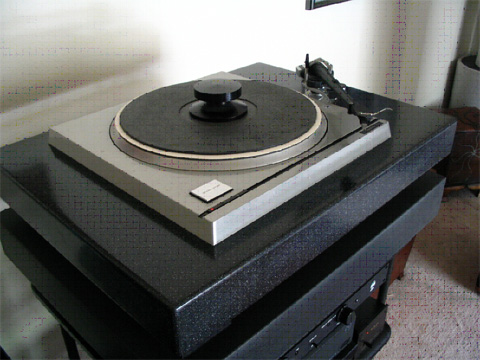
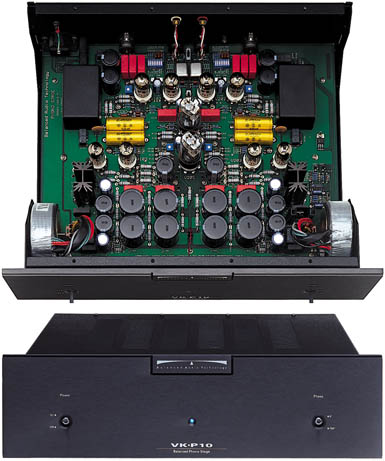
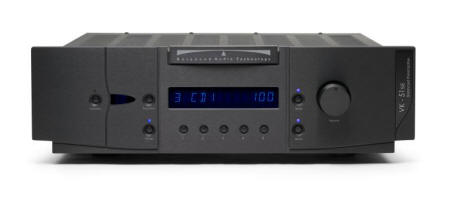
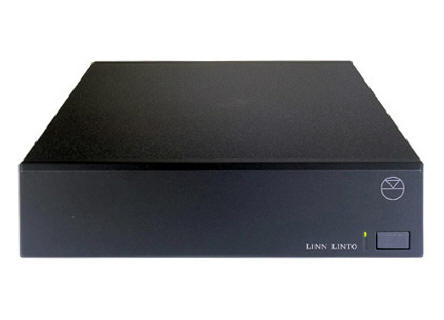
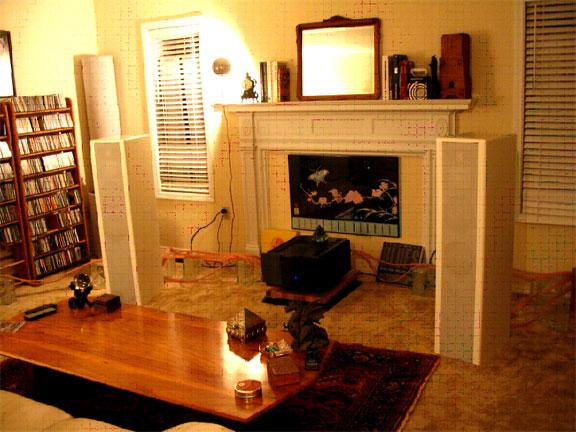
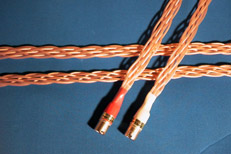
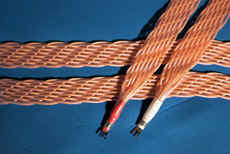
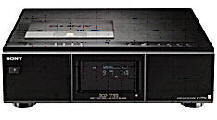

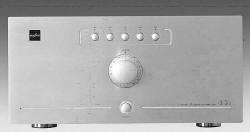
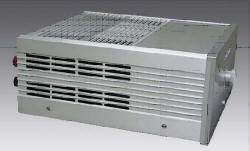

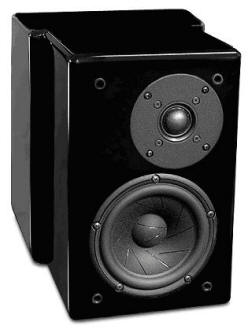
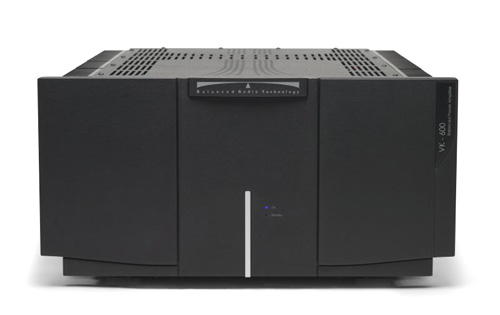
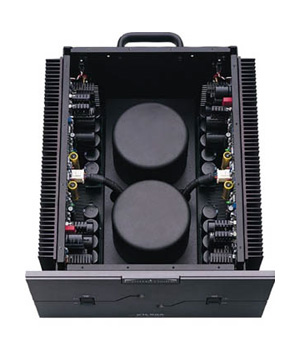 Oddly, although heavier than its predecessor,
visually it is less imposing than the VK-500. Perhaps it is true that black is
"slimming." I managed to get it unpacked and wrestled it into place on the floor
(granite, carbon fiber, maple butcher-board with some Black Diamond Racing
separators) without mishap, but I don't recommend it, unassisted.
Oddly, although heavier than its predecessor,
visually it is less imposing than the VK-500. Perhaps it is true that black is
"slimming." I managed to get it unpacked and wrestled it into place on the floor
(granite, carbon fiber, maple butcher-board with some Black Diamond Racing
separators) without mishap, but I don't recommend it, unassisted.